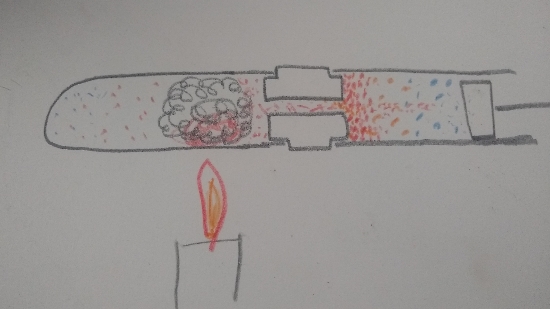Fool wrote: ↑Wed Dec 20, 2023 11:04 am
I think they run on the train-chain theory. The nozzle forces the train to speed up promoting an inertial over evacuation until reversal and that then provides an inertial over pressure. Heat is absorbed by the working gas at the high pressure end and removed at the low pressure end
Heat only goes into and out of these engines through a delta T.
Delta T between the hot plate and inside gas.
Delta T between the inside gas and the cold plate.
If the delta T stays constant during the expansion or compression it would be isothermal.
Isothermal but colder than the hot plate.
Hotter than the cold plate.
The faster the expansion the larger the delta T would be. The flame temperature would also need to be hotter than the hot plate. And room would have to be colder than the cold plate.
My point is, it would still be isothermal with those extra delta It's.
I think I can agree with the
bolded portion or the passage. The rest is addressing a point about "isothermal" I see as irrelevant on the basis that in a REAL engine isothermal expansion and contraction is mostly just plain impossible because isothermal heat transfer is a SLOW process and REAL engines just run too fast. But, setting aside the Isothermal question, I want to return to the "train-chain" concept.
First of all, I don't think this can be taken literally because, well, are individual gas molecules linked together? Personally I might argue that they are, by forces of mutual attraction and repulsion. The Ideal gas law does not recognize or take into account such forces and neither does the kinetic theory of heat in a gas, but science generally does recognize that these forces of molecular attraction and repulsion do infact exist and do, under "extreme" conditions, have an influence. Though, unfortunately, what constitutes "extreme" is not well defined. Conditions of high pressure and low temperature are often mentioned, but again, rather vague. What it seems to come down to though is ANY PRESSURE above 1atm and ANY temperature below ambient will show deviations from the ideal gas law.
But, in reality, the forces of attraction and repulsion between gas molecules always exists and always has an influence, theoretically, but setting that aside, let's assume or visualize this "train-chain" of gas molecules passing back and forth through the orifice in a (I'm just going to call it Lamina Flow) Lamina Flow engine.
To reiterate:
The nozzle forces the train to speed up promoting an inertial over evacuation until reversal and that then provides an inertial over pressure.
Trying to imagine this...
Well, for a while there, I thought it made sense, but now that I try to actually imagine it I just end up with most of the links of the chain piled up in the bottom of the power cylinder.
The "links" would need to be more like rubber bands.
If the piston moves out a lot of molecules are drawn through the orifice at high speed.
As the piston returns the chain continues to "pull" more molecules through the orifice into the power cylinder.
With the heating chamber continually receiving heat, it is difficult to imagine the "chain" withdrawing back through the orifice and back into the heating chamber. The "rubber" links still want to pile up in the bottom of the power cylinder.
You wrote: "...over evacuation until reversal and that then provides an inertial over pressure".
This "over pressure" I would then equate with the pile-up I'm imagining at the bottom of the power cylinder.
What I imagine ending up with is something like this:

- Resize_20231227_123350_0802.jpg (90.22 KiB) Viewed 3573 times
The next statement is:"Heat is absorbed by the working gas at the high pressure end and removed at the low pressure end".
I have some issues there.
If the situation is something like what I've illustrated, the "low pressure end" is to the far right (blue dots) and the "high pressure end" is the pile-up in the far left of the power cylinder (red dots).
I'm not at all sure if this is anything like what you had in mind.
Assuming any of this is at all representative of reality, the main problem I have is with these assumptions:
1. Heat is absorbed by the working gas at the high pressure end
2. Heat is ... removed at the low pressure end
What I see is more a heat pump.
The working fluid is expanded and cooled (right side-blue) so it is able to take in heat from the surroundings.
The working fluid is "superheated" where the gas is at a high pressure (to the left-red) so would tend to give off heat to its surroundings.
Of course, I think we all are aware that pressure tends to remain uniform throughout an enclosed container at all times. But, I think, the cumulative effect of several cycles could kinda, sorta result in some such situation.
Trying to accurately visualize what might be going on in an engine cylinder at say 1000 RPM is admittedly exceedingly difficult.
What I do see is that the piston tends to oscillate from a central location in the cylinder, with compression happening to the left and expansion to the right.
I'll post an image or video to illustrate what I mean.